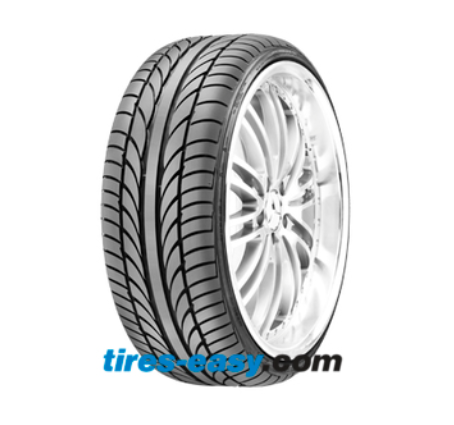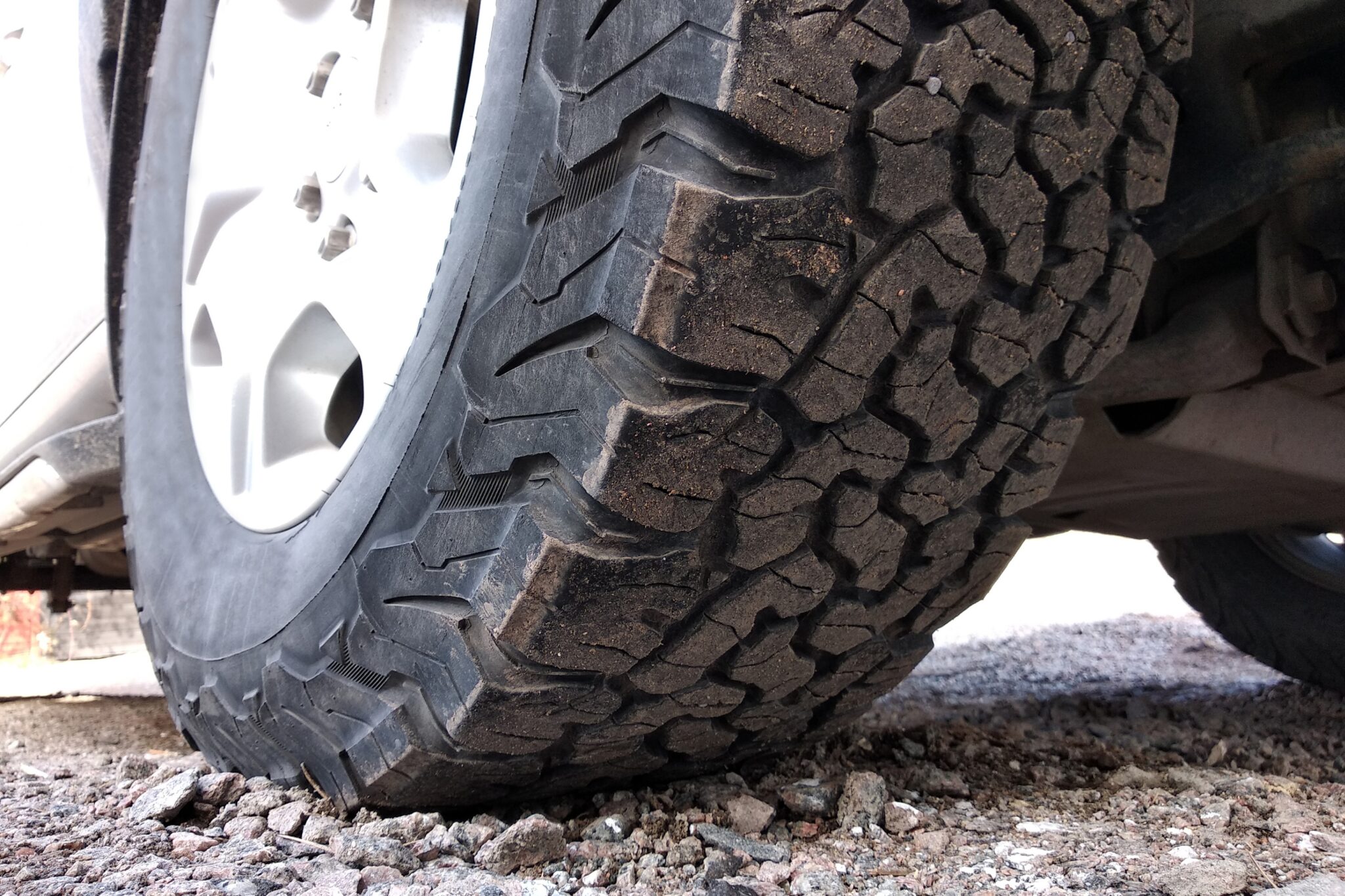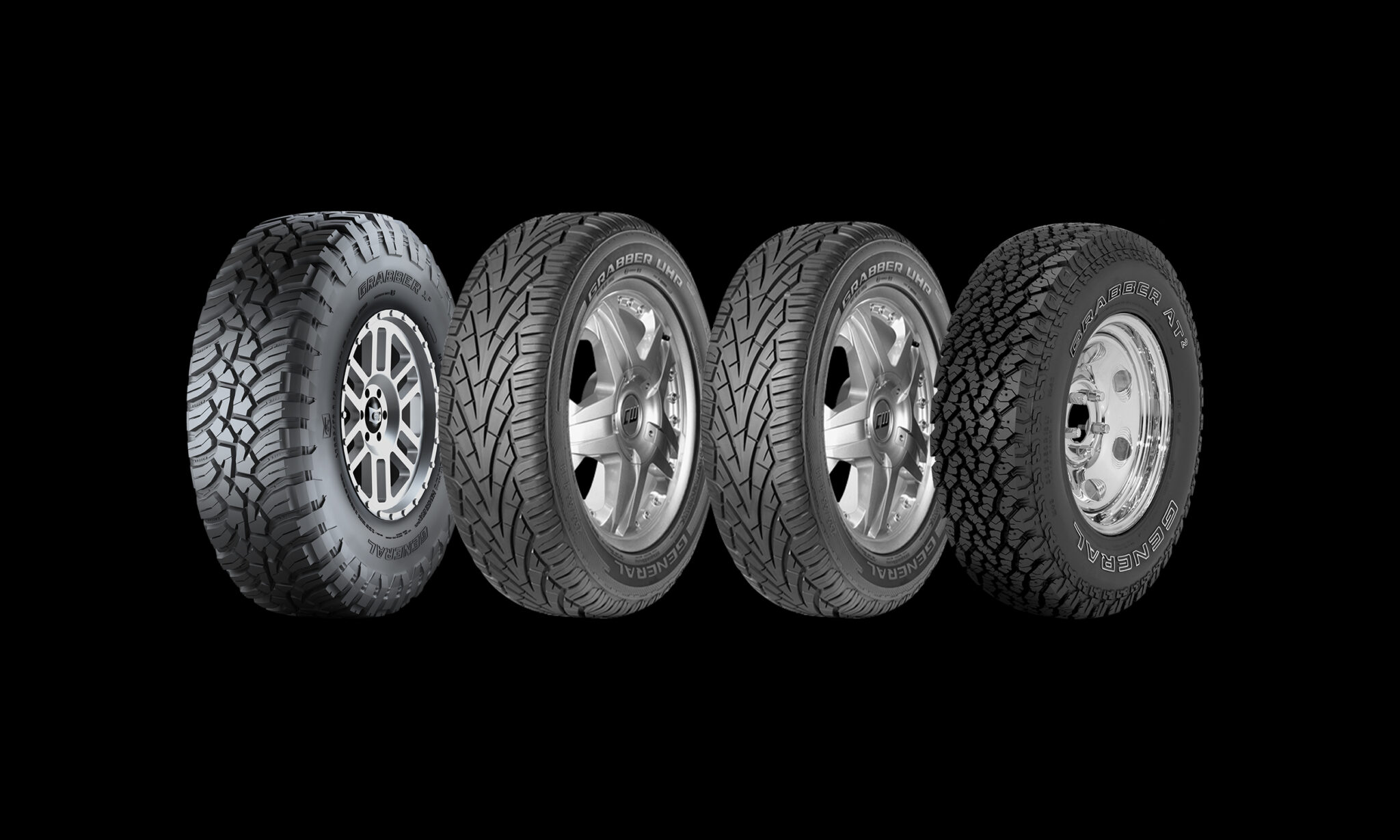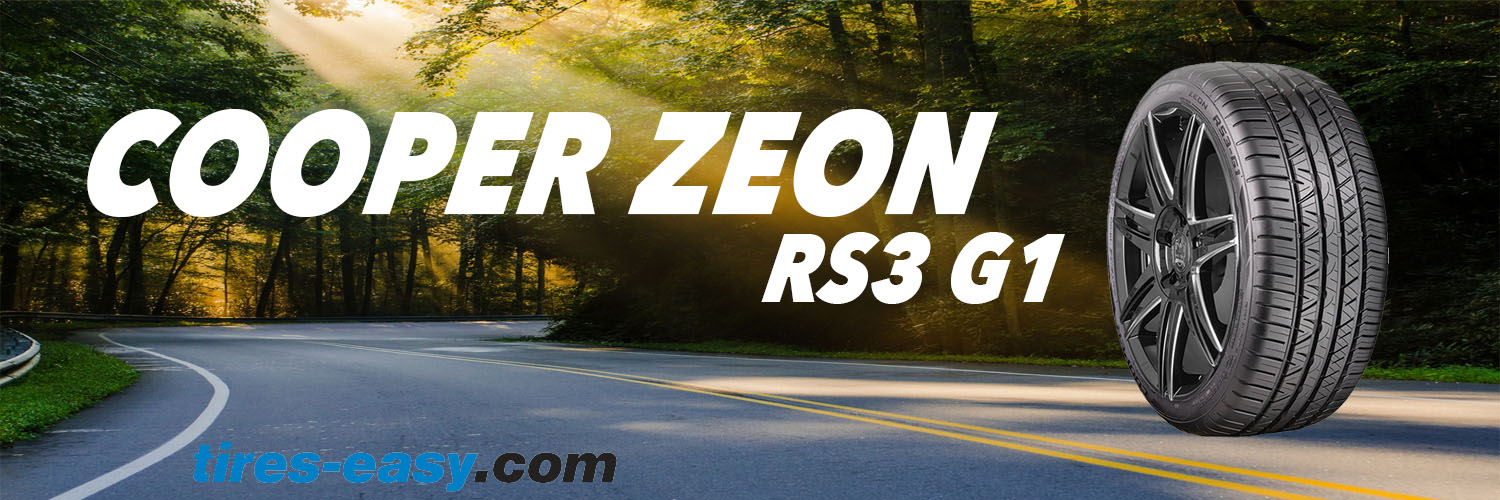Last Updated on April 21, 2024
Navigating the Advantages of Directional Tires
When it comes to tires, the direction matters—literally. Directional tires are unique in the tire world, offering specific advantages and a distinct tread pattern designed to optimize performance and safety. In this guide, we’ll navigate the ins and outs of directional tire tread patterns, helping you make informed choices for your driving needs.
Every tire has a unique tread pattern – and it’s not just there for looks. The tread’s chief purpose is to increase the tire’s functionality, significantly affecting essential factors such as gas mileage, tread life, and handling. It can be confusing to try and make sense of all the different kinds of tread patterns and what they mean for your vehicle.
Understanding Directional Tires
In the vast world of automotive tires, the directional tire stands out for its unique design and purpose. At first glance, its arrow-like tread pattern captures attention, but this design is more than just aesthetic. Crafted to optimize performance in wet conditions, directional tires play a crucial role in enhancing safety and handling on slick roads.
Delving deeper into their design, rotation specifics, and other characteristics can help drivers make informed decisions about their tire choices. Join us as we explore the intricacies of directional tires and their importance in automotive mobility.
- Directional Tread Patterns: The defining feature of directional tires is their V-shaped or arrow-like tread pattern. This design serves a crucial purpose: to channel water away from the tire’s contact patch, reducing the risk of hydroplaning and enhancing wet traction.
- Optimized Water Evacuation: The primary goal of directional tread patterns is efficient water evacuation. Water is channeled from the center towards the outer edges as the tire rotates, enhancing grip on wet roads.
- Enhanced Performance: Directional tires are often associated with high-performance vehicles due to their ability to provide exceptional traction, stability, and handling, particularly at higher speeds.

Decoding the World of Directional Tires
Specifically for the smaller niche of luxury and high-performance car owners, knowing the best type of tire to purchase can be tricky to pinpoint. Several notable differences exist between the tread patterns and definite pros and cons.
For this post, we’ll dive deeper into the world of directional tires and explain everything there is to know about this unique tread pattern. To ensure you’re adequately equipped for your next joy ride, follow this short guide to determining if directional tires are suitable for your vehicle:
Directional tires are a little different than their symmetrical counterparts. Manufactured explicitly for high-performance vehicles, Directional tires are designed to roll only in one direction and have limited mounting options due to their specific functions.
You can recognize a directional tread pattern by the ‘V-shaped’ pattern of lateral grooves running down the middle of the tire. Think of it like an arrow pointing in the rolling direction of the tire.
Considerations for Directional Tires
Directional tires, often recognized by their arrow-like tread pattern, are designed to enhance performance on wet surfaces by effectively pushing water away from the tire’s footprint. But like all tires, they come with their unique set of considerations.
- Rotation Specifics: One of the most defining features of directional tires is their strict rotation pattern. They are meant to rotate in one specific direction, which is often marked on the tire sidewall. This is crucial for their hydroplaning resistance capabilities. Therefore:
- When getting them installed, always ensure they are positioned to rotate correctly.
- Regular rotation is a must, but unlike regular tires, you can only swap them front to back on the same side of the vehicle. Cross-rotating will negate their purpose and could decrease their performance.
- Limited Snow Traction: Directional tires are champions on wet roads but might not offer the best grip or control in snowy or icy conditions. While perfect for channeling water, their tread design might not provide the necessary bite on snow or ice.
- For those living in areas with significant winter conditions, investing in a set of dedicated winter tires with tread patterns and rubber compounds specially designed to tackle snow and ice is wise.
- Uneven Wear: Like any other tire, the life and performance of a directional tire can be compromised if not cared for properly.
- Failing to rotate the tires regularly or having a misaligned vehicle can result in uneven tread wear.
- Periodic checks and alignments can ensure that your tires wear evenly and last longer. Inspecting the tires for any physical damage or irregularities is also a good practice.
- Cost and Availability: Due to their specialized design, directional tires might be priced higher than standard all-season tires. Additionally, not all tire shops will have many directional tires in stock. Researching and perhaps even calling ahead is always a good idea to ensure availability.
- Performance in Other Conditions: While we’ve touched upon wet and snowy conditions, it’s worth noting that directional tires are often quieter and provide a smoother ride on highways due to their continuous center rib. However, rough terrains like gravel or mud might not perform as well as all-terrain tires.
Directional tires can be a great choice for those who primarily drive in rainy conditions; knowing their limitations and care requirements is crucial. Regular maintenance, proper rotation, and understanding when to switch them out for more appropriate tires can ensure the best performance and longevity.
Mounting Directional Tires
Unlike symmetrical tires, once mounted, directional tires must remain on the same side of the vehicle and only be rotated front to rear. Arrows molded in the sidewalls show the correct direction to mount these tires, arrows always pointing forward. Because mounting is restricted to the same side of the vehicle, this can make the tires slightly more complicated to mount and often causes faster wearing.
Benefits of Directional Tires
But the benefits of directional tires can’t be found in any other tire style. , The design also provides better overall fuel economy and handling on wet and dry roads. The tread is designed to efficiently pump water throughout the grooves while maintaining maximum road contact.
Because of this advanced wet traction, directional tires effectively resist hydroplaning at high speeds. As to be expected for an ideal high-performance driving experience, the on-center feel of these tires allows for improved high-speed stability and handling.
- Improved Wet Traction: Directional tread patterns excel in wet conditions, making them preferred for rainy or aquatic terrains.
- Reduced Hydroplaning: The efficient water dispersion minimizes the risk of hydroplaning, ensuring safer journeys during heavy rain.
- Enhanced Cornering: Directional tires offer superior cornering grip, improving stability and control.
- High-Speed Capability: Ideal for sports cars and performance vehicles, directional tires can maintain stability at higher speeds.
- Aesthetic Appeal: The arrow-like tread pattern often adds a sporty, aggressive look to the vehicle.
Types Of Directional Tires
Different directional tires are available, each designed to cater to specific driving needs and conditions. Here are some common types of directional tires:
- High-Performance Directional Tires: These are designed for sports cars and high-performance vehicles. They prioritize superior handling, wet traction, and stability at higher speeds.
- Summer Directional Tires: Ideal for warm and dry conditions, these tires provide exceptional grip and responsiveness on dry roads.
- All-Season Directional Tires: These tires balance wet and dry performance. They are suitable for various weather conditions, including light snow.
- Wet Weather Directional Tires: Specifically engineered for wet and rainy conditions, these tires prioritize water evacuation and reduce the risk of hydroplaning.
- Snow and Ice Directional Tires: While directional tires are not typically recommended for snow and ice, some specialized models are designed for improved traction in winter conditions.
- High-Performance SUV Directional Tires: Tailored for SUVs and crossovers, these directional tires offer the same benefits of enhanced wet traction and handling but with the load-carrying capacity required for larger vehicles.
- Off-Road Directional Tires: Some off-road and mud-terrain tires feature directional tread patterns that provide maximum traction in challenging terrain. However, these depart from the typical V-shaped directional pattern.
Choosing the right directional tire type is essential based on your vehicle, driving habits, and the prevailing weather and road conditions you encounter.

Discover the Power of Directional Tires
If there is any point we’d like to drive home, it’s this: if you’re looking for superior fuel efficiency, wet traction, and high-speed handling, you’ll find everything you need in a directional tire.
Tires-Easy has been supplying quality new tires online to United States consumers since 2004. We pride ourselves on having the best selection of quality new tires and an extensive knowledge center to aid our customers in the tire buying process. Our customers can easily find the necessary tires at prices that suit their budget. Check our blog and knowledge center for more useful tire-buying info at Tires Easy.
Making the Right Choice
Choosing directional tires depends on your driving habits and the conditions you encounter. Directional tires might be your ideal companion if you frequently drive in wet weather or demand high-speed performance. However, for those facing snowy winters, it’s advisable to complement directional tires with dedicated winter options.
Conclusion
As we wrap up our journey through the world of directional tires, it’s clear that these unique tread patterns have much to offer, especially for high-performance car owners. Their ability to enhance wet traction, reduce hydroplaning, and deliver exceptional handling makes them valuable.
However, it’s essential to consider your driving habits and the conditions you face before making a tire selection. Directional tires can be the perfect companion for those seeking a dynamic driving experience focusing on safety and performance. So, whether racing around corners or cruising down the highway, directional tires can point you in the right direction for a thrilling ride.
Ready to Point Your Vehicle in the Right Direction?
Elevate your driving experience with directional tires from Tire Easy.
Explore our directional tire options and enjoy safer, high-performance journeys.
Discover and BUY your ideal directional tires today!
FAQs
What is the directional tire tread pattern?
The directional tire tread pattern is characterized by V-shaped or arrow-like grooves running down the middle of the tire, designed to channel water away from the tire’s contact patch for improved wet traction and reduced hydroplaning risk.
What are directional tires?
Directional tires are a type of tire designed for high-performance vehicles. They feature a specific tread pattern that allows them to roll in one direction only, enhancing their ability to provide superior wet traction, stability, and handling.
Do tires have directional tread?
Yes, some tires have directional tread patterns. These tires are designed to roll in one direction to maximize their performance characteristics, particularly in wet conditions.











